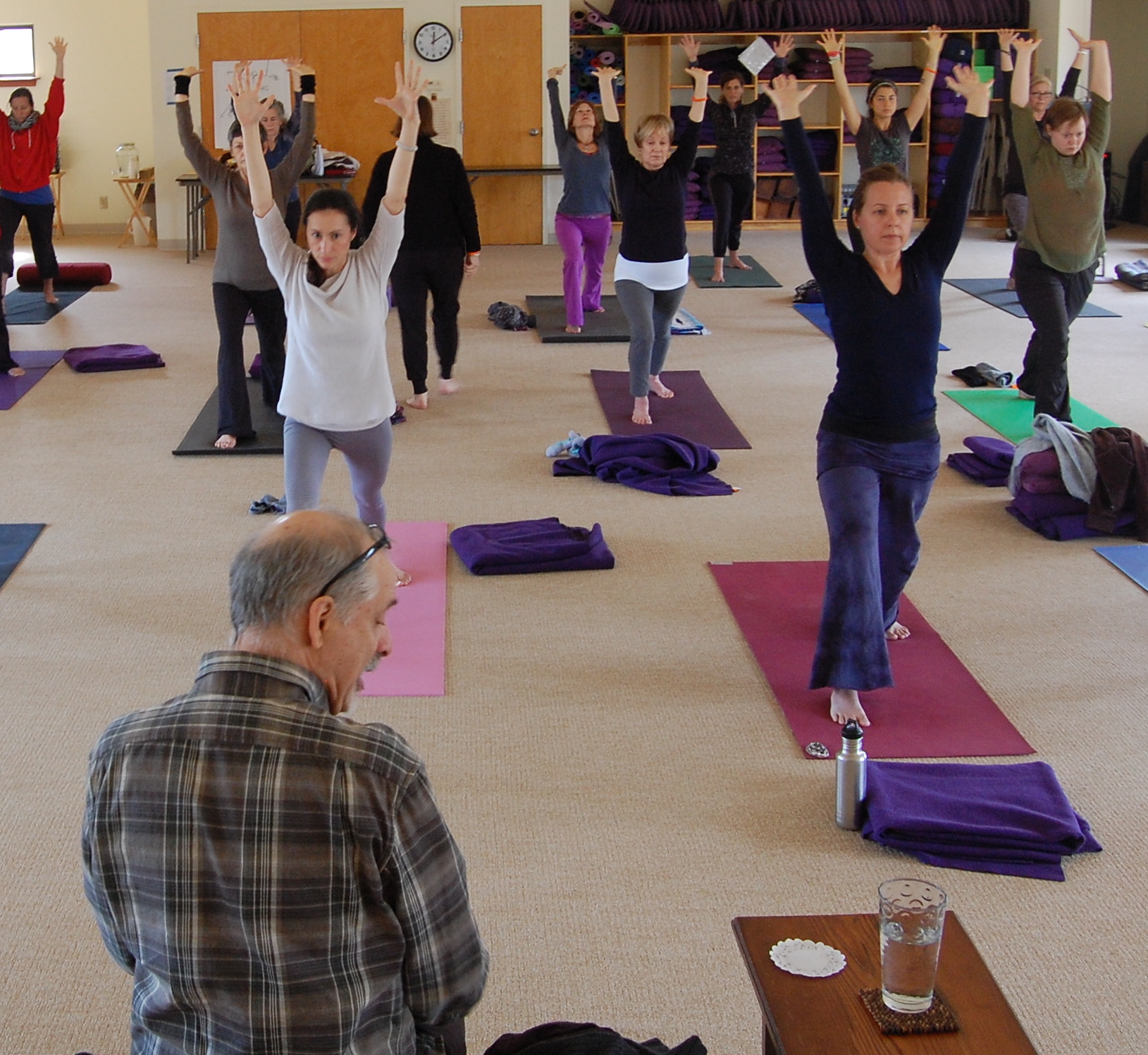What is Viniyoga?
Part One – Repetition and stay
What is the best way to learn to do something well?
Practice, right? If you were planning a skiing vacation, you would be wise to get your legs and lungs in condition. If you were about to sing an aria on stage, you would sing a few bars of do-re-mi before your curtain. Any kind of physical exertion, from sports to artistic performance, deserves a little time and energy in preparing the body for what is to come.
The same is true with a yoga practice. One of the first distinctions that yoga practitioners often notice in Viniyoga is the use of repetition and stay. While many other traditions occasionally use dynamic repetition, Viniyoga uses this practice repeatedly in conjunction with the breath. Repetition allows the muscles to stretch and contract so the body can slowly warm up and adjust. A typical Viniyoga practice will include repetition in some postures (asanas), and repetition and stay in others, depending upon the ultimate goal of the practice.
By moving in and out of a posture, you will start to notice the patterns of your own movement. Are you holding tension somewhere? Is one part of your body moving differently than another? You may find habits that surprise you.
As you become accustomed to the movement, you will ultimately start to notice your breath as an important catalyst of this “dance”. You will begin to understand the idea that the postures originate from inside your body: breath centric asana.
Naturally, this idea of exploring your own patterns of breath and movement is a highly individualized endeavor. We will dive into that area in more detail next week when we look at the idea of Function Over Form: adapting a practice to fit individual needs.
Viniyoga Professional Training
New teacher training sessions begin in April 2018! Contact our Student Advisor.



